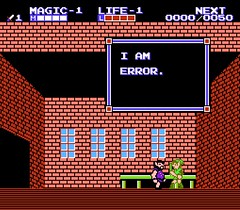 |
| Image by Mark Giles Used under CreativeCommons https://flic.kr/p/2okVh |
I recently purchased a record player. I’m not exactly sure
why I purchased it (I’ll forego explanations about the “warmth” of the sound,
etc), but part of it, I think, has to do with re-socializing the musical
consumption process (cf previous post) and a reacquisition of tactility, both
of which center on the process of visiting a record store. Another effect of my
newfound habit of purchasing records is that I mostly purchase the full albums
within which the singles I know well are situated, within their original
contexts and juxtapositions—including placement vis-à-vis other songs on the
album and their relative position to the “flip,” which I feel is a kind of
aural caesura, a dramatic device.
It would be stating the obvious to point out
how digital music (especially the iTunes store) has reiterated the primacy of the “single,” but I do think that there is a
risk of losing something by consuming singles as singles. The risk of loss is not some kind of encoded meaning derived from a track existing in its set context within an album; rather, the possibility of loss is the process of creative close listenings necessary to decipher the parataxis of
song placement on albums—why are the songs ordered thus? (Definition of poetic parataxis, from Wikipedia: "[Parataxis is] used to describe a technique in poetry in which two images or fragments, usually starkly dissimilar images or fragments, are juxtaposed without a clear connection. Readers are then left to make their own connections implied by the paratactic syntax.") Why would this song
precede the following song, and how do they relate? The most fascinating thing
to me about digital listening is that parataxis is not lost in the primacy of the
single in the playlist; it just becomes further listener constructed (decentering
the editorial authority of the producer/artist), and intensified by the need for creating
more distant relations. The difference is that many people don’t consider these
juxtapositions in playlists or shuffles as meaning-making devices—but should.
With the rise of critical theories like reader-response
theory, questions of meaning moved from that of encoded and intended
meaning—why did the artist place the tracks in this order? Can we figure out
what he or she meant through a close-listening?—to the listener’s role in
constructing meaning—here’s what this track placement means to me… Listening to
a record, where the tracks are ordered according to the producers’ wishes,
certainly makes one want to ask questions similar to the former, but also lends
itself to the latter. In either process, a engagement with parataxis occurs.
The listener is forced to make a creative leap with little to no cues with regard
to the subordination of tracks or the transitions between them. For example, on
Led Zeppelin I, how does “Good Times,
Bad Times” transition into “Babe, I’m Gonna Leave You?” Is it the triumph of
the “bad times” over the good, resulting in the subject deciding to abandon the
relationship? These are the kinds of questions the track placement in a record
begs us to ask.
One might posit that the vast majority of musical
consumption moving to singles rather than full albums obviates the ability to
engage in such analyses. But to do so would be mistaken and would forego one of
the greatest advantages that modern technology affords to musical
interpretation: the ability for listeners to construct their own juxtapositions
or to use algorithms in the (somewhat) aleatory making of meaning. In other
words, the juxtapositions created in playlists don’t carry any less meaning
because they were not placed by an editorial authority. In fact, it’s possible
that the decentered construction of the playlist or shuffle gives way to more
possibility than preconfigured arrangements.
Let’s say for example, that your shuffle algorithm decides
to play Sinatra’s “My Way” before Bob Marley’s “Redemption Song.” Most would
chalk this up to the result of having a variegated musical taste and would
listen to the tracks as unrelated singles. An alternative would be to ask the
question of what the juxtaposition of these tracks signals. Does Sinatra (via
Paul Anka) celebrating the triumph of individualism over attempts to constrain
and reduce him (me vs. the world) against Marley’s populist anthem for liberation denote
a conflict (individual vs. collective) or an exploration of the same impulse to
understand a complex dialectical that takes place daily? Also, what does it say
about the arranger of the list to have both of these tracks in his or her
library?
This kind of extreme parataxis and decentering of the editor
is nothing new. Consider greatest-hits albums. In these cases, few would ask
the questions about juxtapositions suggested here (though, I would argue,
should). Too, the forms of relation between individual tracks are evolving
constantly. Consider Pandora and other algorithmic forms of Internet radio.
These highly mediated orderings of songs need an additional layer of
exploration (rendering more opaque their algorithms and determinants to song
selection), but also should not be exempted from close-listenings.
While this brief blog post cannot hope to cover all of the
background necessary to fully explore this topic, my hope is to propose that we,
from time to time, establish some critical distance to the music we listen to
and engage in the creative act of close-listening and thus, meaning-making. We
shouldn’t let the fact that musical tracks are called “singles,” a term that
derives from their relative lack of editorial context, exempt us from what we
might learn from considering them in juxtaposition.
All of this reminds me of a well-known statement by Emily
Dickinson: “Did you ever read one of her Poems backward, because the plunge
from the front overturned you? I sometimes (often have, many times) have -- a
Something overtakes the Mind—“
I propose that a Something overtakes the Mind when we listen
on shuffle.





